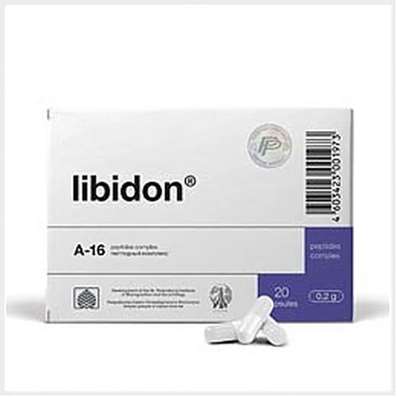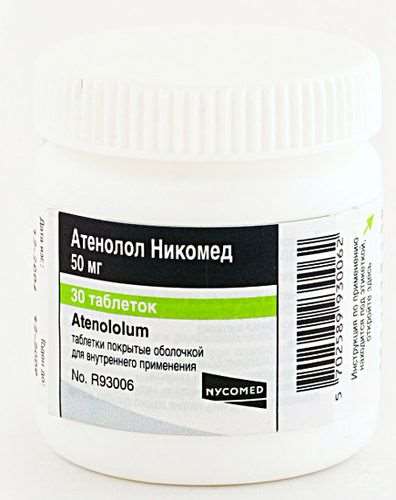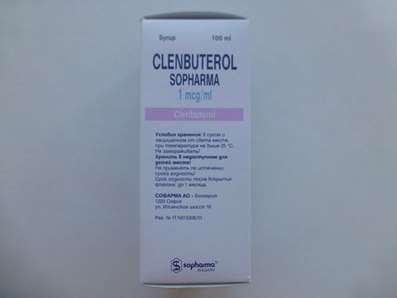Instruction for use: Lokren
I want this, give me price
Trade name of the drug – Lokren
Dosage Form: tablets
ATX
C07AB05 Betaxolol
Pharmacotherapeutic group: Beta1-selective blocker [Beta-blockers]
The nosological classification (ICD-10)
I10 Essential (primary) hypertension: hypertension; Arterial hypertension; Arterial hypertension crisis course; Essential Hypertension; Essential hypertension; Essential hypertension; Essential hypertension; Essential hypertension; Primary hypertension; Arterial hypertension, complications of diabetes; The sudden increase in blood pressure; Hypertensive disorders of blood circulation; hypertensive condition; hypertensive crises; arterial Hypertension; malignant Hypertension; Hypertonic disease; hypertensive crises; accelerated hypertension; malignant hypertension; The aggravation of hypertensive disease; Transient hypertension; Isolated systolic hypertension
I15 Secondary hypertension: Arterial hypertension, complications of diabetes; hypertension; The sudden increase in blood pressure; Hypertensive disorders of blood circulation; hypertensive condition; hypertensive crises; hypertension; arterial Hypertension; malignant Hypertension; hypertensive crises; accelerated hypertension; malignant hypertension; The aggravation of hypertensive disease; Transient hypertension; hypertension; Arterial hypertension; Arterial hypertension crisis course; renovascular hypertension; Hypertension symptomatic; Renal hypertension; Renovascular hypertension; renovascular hypertension; Symptomatic hypertension
I20 Angina [angina]: Heberden disease; Angina pectoris; The attack of angina pectoris; recurrent angina; Spontaneous angina; Stable angina pectoris; Angina rest; Angina progressing; Angina mixed; Angina spontaneous; stable angina; Chronic stable angina; Angina Syndrome X
Composition (per tablet): Betaxolol hydrochloride 20 mg
Excipients: lactose monohydrate - 100 mg; sodium amylopectin glycolate - 4 mg; MCC - 113 mg; Anhydrous colloidal silica - 1.6 mg; Magnesium stearate - 1.4 mg; Valium - 3,90 mg; macrogol 400 - 0,43 mg; titanium dioxide (E171) - 0,67 mg
in blister 14 pcs .; 2 blisters in the box.
Description
White, biconvex film-coated tablets, with a separating line on one side and engraved with «KE20» - on the other side.
Pharmacological Properties of Lokren
Pharmachologic effect - antianginal, hypotensive.
Pharmacodynamics
Betaxolol is characterized by three pharmacological properties:
cardioselective beta-adrenoceptor blocking action;
lack of partial agonist activity (i.e., does not exhibit self sympathomimetic action);
weak membrane stabilizing effect (like quinidine or local anesthetics) at concentrations exceeding therapeutic.
Pharmacokinetics
Rapidly and completely (100%) is absorbed from the gastrointestinal tract after oral administration, bioavailability - about 85%. Cmax is reached within 2-4 hours in the blood plasma. Betaxolol binds to plasma protein by about 50%.
The permeability of the BBB and placental barrier - low. The secretion of breast milk - small.
The volume of distribution - about 6 L / kg. In betaxolol body mainly transformed into inactive metabolites. Solubility in fats moderate.
Excreted by the kidneys as metabolites (80%), 10-15% in unchanged form. T1 / 2 of betaxolol - 15-20 hour half-life with abnormal liver function is extended by 33%, but the clearance is not changed;. with impaired renal function the half-life is doubled (to be dose reduction).
Not removed by hemodialysis.
Indications for Lokren
arterial hypertension;
prevention of angina attacks.
Contraindications for Lokren
Hypersensitivity to betaxolol;
severe chronic heart failure IIB-III degree;
cardiogenic shock;
AV blockade II and III level (without connecting the pacemaker);
Prinzmetal angina;
syndrome sick sinus (including sinoatrial block);
bradycardia;
hypotension;
Combination therapy with sultopride and floctafenine;
simultaneous reception of MAO inhibitors;
cardiomegaly (without heart failure);
age of 18 years (effectiveness and safety have been established).
Due to the presence of lactose drug contraindicated:
in congenital galactosemia;
malabsorption syndrome glucose / galactose or lactase deficiency.
Carefully:
a history of allergic reactions;
pheochromocytoma;
metabolic acidosis;
obliterating peripheral vascular disease ( "intermittent" claudication, Raynaud's syndrome);
liver failure;
chronic renal failure;
hemodialysis;
myasthenia gravis;
depression (including history);
elderly age;
AV block of I degree;
chronic obstructive pulmonary disease (bronchial asthma, emphysema);
psoriasis;
chronic circulatory insufficiency;
hyperthyroidism;
diabetes.
Pregnancy and breast-feeding
There were no drug teratogenicity in animal experiments. So far, people have not indicated teratogenic effects and controlled prospective studies have not revealed congenital malformations.
Application of pregnancy is possible only when the benefit to the mother outweighs the potential risk to the fetus and / or the child.
Beta-blockers penetrate into breast milk (see. "Pharmacokinetics"). The risk of hypoglycemia and bradycardia has not been studied, therefore breast-feeding should be discontinued during treatment.
Side effect of Lokren
From the nervous system: fatigue, weakness, dizziness, headache, drowsiness or insomnia, nightmares, depression, anxiety, confusion, or momentary loss of memory, hallucinations, asthenic syndrome, muscle weakness, paresthesias in the extremities (in patients with "intermittent" claudication, Raynaud's syndrome), tremor.
Cardio-vascular system: sinus bradycardia, palpitations, orthostatic hypotension, conduction disturbances infarction, AV block (up to cardiac arrest), arrhythmia, weakening of the myocardial contractility, the development (or worsening) of symptoms of heart failure (swelling of ankles, feet, legs), marked reduction in blood pressure, a manifestation of vasoconstriction (decreased peripheral circulation, cooling of the lower extremities, Raynaud's syndrome), pain in the chest.
From the digestive system: dry mouth mucous membranes, nausea, vomiting, abdominal pain, constipation or diarrhea, abnormal liver function (dark urine, yellow skin or sclera, cholestasis), change in taste.
The respiratory system: nasal congestion, difficulty breathing in the appointment of high doses (loss of selectivity) and / or in predisposed patients - laryngo and bronchospasm.
From the senses: visual disturbances, reduced secretion of the lacrimal glands, dryness and soreness of eyes, conjunctivitis.
For the skin: increased sweating, flushing of the skin, rash, psoriasiform skin reactions, exacerbation of psoriasis flow.
Allergic reactions: skin rash, pruritus, urticaria.
From endocrine system: hyperglycemia in patients with non-insulin dependent diabetes, hypoglycemia in patients receiving insulin, hypothyroid state.
Effect on the fetus: intrauterine growth retardation, hypoglycemia, bradycardia.
Other: back pain, arthralgia, weakening of libido, reduced potency, "cancellation" syndrome (increased angina attacks, increased blood pressure).
Laboratory data: in rare cases the appearance of antinuclear antibodies, which only exceptionally accompanied by clinical symptoms such as systemic lupus erythematosus, passing at the termination of treatment.
Interaction
Many drugs can cause bradycardia. This group includes beta-blockers, antiarrhythmics class IA (quinidine, disopyramide), amiodarone and sotalol of Class III antiarrhythmic agents, diltiazem and verapamil from Class IV, as well as digitalis glycosides, clonidine, guanfacine, mefloquine and cholinesterase inhibitors shown to Alzheimer's disease.
contraindicated combinations
Floctafenine. In the event of shock or hypotension due floctafenine, beta-blockers cause a reduction in compensatory cardiovascular reactions.
Sultopride. Severe bradycardia (additive effect).
Combinations to be avoided:
Blockers "slow" calcium channel blockers (bepridil, diltiazem and verapamil). Violations of automatism (severe bradycardia, sinus arrest), disturbances of AV conduction, heart failure (synergistic effect).
This combination can only be used under close clinical and electrocardiographic supervision, especially in elderly patients or in the beginning of treatment.
Amiodarone. Disturbances of contractility, automatism and conduction (suppression of sympathetic compensatory mechanisms).
Combinations to be used with caution
Volatile halogenated anesthetic agents. Beta-blockers reduce the compensatory cardiovascular reactions (during the operation of the blockade effect of beta-adrenergic receptors can be eliminated beta-agonists). As a rule, therapy of beta-blockers should not be stopped, and the abrupt withdrawal of the drug should be avoided in any case. The anesthesiologist must be made aware of the treatment.
Drugs that can cause atrial fibrillation (except sultopride). Antiarrhythmic drugs class IA (quinidine, gidrohinidin and disopyramide) and class III (amiodarone, dofetilide, Ibutilide, sotalol), some antipsychotics from the group phenothiazines (chlorpromazine, tsiamemazin, Levomepromazine, thioridazine), benzamides (amisulpride, sulpiride, tiaprid), butyrophenones ( droperidol, haloperidol), other neuroleptics (pimozide), and other drugs (cisapride, difemanil, I / erythromycin, halofantrine, mizolastine, moxifloxacin, pentamidine, / in spiramycin, and vincamine).
Increased risk of ventricular arrhythmia, particularly «torsades de pointes».
It requires clinical and electrocardiographic monitoring.
Propafenone. Disturbances of contractility, automatism and conduction (suppression of sympathetic compensatory mechanisms).
It requires clinical and electrocardiographic monitoring.
Baclofen. Increased antihypertensive effect.
Necessary to control the level of blood pressure and antihypertensive dose adjustment if necessary.
Insulin and oral sulfonylureas. All beta-blockers may mask certain symptoms of hypoglycemia: palpitations and tachycardia.
The patient should be advised of the need to strengthen the self-monitoring of blood sugar levels, especially at the beginning of treatment.
Cholinesterase inhibitors (ambenonium, donepezil, galantamine, neostigmine, pyridostigmine, rivastigmine, tacrine). Risk enhance bradycardia (additive effect).
It requires regular clinical monitoring.
Antihypertensives central action (clonidine, alpha-methyldopa, guanfantsin, moxonidine, rilmenidine). Significant increase in blood pressure with antihypertensive abrupt cancellation of the central action.
It is necessary to avoid abrupt withdrawal of antihypertensive drug and conduct clinical monitoring.
Lidocaine / in. Increasing the concentration of lidocaine in the blood plasma with a possible increase of unwanted neurological symptoms and effects of the cardiovascular system (reduced lidocaine metabolism in the liver).
Recommended clinical and ECG monitor and possibly control lidocaine concentration in blood plasma during treatment with beta-blockers and after its termination. If necessary - correction dose of lidocaine.
Combinations to be taken into account
NSAIDs (systemic), including: Selective COX-2 inhibitors. Reduced antihypertensive effect (inhibition of PG synthesis and water retention and sodium pyrazolone derivatives).
BPC. Arterial hypotension, circulatory failure in patients with latent or uncontrolled heart failure. Treatment of beta-blockers can minimize the sympathetic reflex mechanisms.
Tricyclic antidepressants (such as imipramine), antipsychotics. Increased antihypertensive effect and risk of orthostatic hypotension (additive effect).
Mefloquine. Risk of bradycardia (additive effect).
Dipyridamole (w / w). Increased antihypertensive effect.
Alpha-blockers, used in urology (alfuzosin, doxazosin, prazosin, tamsulosin, terazosin). Increased antihypertensive effect. Increased risk of orthostatic hypotension.
Amifostine. Increased antihypertensive effect.
The allergens used for immunotherapy, or allergen extracts for skin tests increase the risk of severe systemic allergic reactions or anaphylaxis in patients receiving betaxolol.
Phenytoin at / in the introduction cardiodepressive increases the severity of the action and likelihood of blood pressure lowering.
Reduces clearance of xanthine (except dyphylline) and increases their concentration in the blood plasma, especially in patients with initially increased clearance of theophylline (eg under the influence of smoking).
Antihypertensive effect of weakening estrogens (sodium retention).
Cardiac glycosides, methyldopa, reserpine, guanfacine and increase the risk of developing or worsening of bradycardia, AV block, cardiac arrest.
Nifedipine can lead to a significant reduction in blood pressure.
Diuretics, clonidine, sympatholytic, hydralazine and other antihypertensive drugs may lead to an excessive reduction in blood pressure.
Extends the action of non-depolarizing muscle relaxants and anticoagulant effect of coumarin.
Ethanol, sedatives and hypnotics drugs increase CNS depression.
Not recommended simultaneous application with MAO inhibitors due to the significant increase in the hypotensive action, a break in treatment between receiving MAO inhibitors and betaxolol should be at least 14 days.
Non-hydrogenated ergot alkaloids increase the risk of peripheral circulatory disorders.
Dosage and Administration
Inside, not liquid, squeezed enough liquid.
The initial dose - 1 tab. (20 mg) per day.
Dosage in patients with renal insufficiency
Dose should be determined in accordance with the patient's renal function: dose modification is not required for creatinine Cl> 20 ml / min. However, at the beginning of treatment is recommended to carry out a clinical observation to achieve the equilibrium levels of drug in the blood (an average of 4 days).
In patients with severe renal impairment (Cl creatinine <20 ml / min) the recommended initial dose - 5 mg / day (patients on hemodialysis - regardless of the frequency and time of dialysis sessions).
Dosage in patients with hepatic insufficiency
Patients with hepatic insufficiency dose change is not usually required. However, at the beginning of therapy, it is recommended more careful clinical monitoring of patients.
Overdose
Symptoms: bradycardia, dizziness, AV block, marked reduction in blood pressure, arrhythmia, ventricular premature beats, fainting, heart failure, shortness of breath, bronchospasm, cyanosis of nails of fingers and palms, cramps.
Treatment: gastric lavage, the appointment of absorbent;
The following measures should be applied in the case of bradycardia or excessive decrease in blood pressure:
atropine 2.1 mg / in;
1 mg of glucagon (possibly repeatedly); accompanied, if necessary, a slow infusion of 25 ug or isoprenaline administration of dobutamine 2.5-10 mg / kg / min. In the case of cardiac decompensation in neonates whose mothers during pregnancy taking beta-blockers: glucagon at the rate of 0.3 mg / kg;
hospitalization in an intensive care unit; isoprenaline and dobutamine: usually in high doses and for a long time, which requires the supervision of specialists.
Special instructions
Treatment of patients with angina should never be interrupted abruptly - cancellation may lead to severe cardiac arrhythmias, myocardial infarction or sudden death.
Lactose
Due to the presence of lactose, this drug is contraindicated in congenital galactosemia, malabsorption syndrome glucose / galactose or lactase deficiency.
It is necessary to monitor patients taking Lokren®, which should include the monitoring of heart rate and blood pressure (at the beginning of treatment every day, then 1 every 3 to 4 months), glucose in patients with diabetes (1 every 4-5 months); necessary to monitor kidney function in elderly patients (1 every 4-5 months).
It is necessary to train the patient's heart rate calculation method and instruct on the need of medical advice in heart rate <50 bpm. / Min.
Treatment should not be stopped abruptly, particularly in patients with IHD. The dose should be reduced gradually, ie for 1-2 weeks, and optionally can simultaneously start replacement therapy to prevent the progression of angina.
Approximately 20% of patients with angina, beta-blockers are not effective.
The main reason - severe coronary atherosclerosis with a low threshold of ischemia (heart rate at the time of development of angina attack <100 beats / min.) And increased finite diastolic left ventricular pressure that violates subendocardial blood flow.
At the same time taking clonidine its reception can be terminated only a few days after the cancellation Lokrena®.
Lokren® should be discontinued prior to the study in blood and urine catecholamines and Normetanephrine vanillylmandelic acid; titers of antinuclear antibodies.
Bronchial asthma and chronic obstructive pulmonary disease
Beta-blockers can be administered to patients with only moderate degree of severity of the disease, with a choice of selective beta-blockers in low initial dose. Before treatment, it is recommended to evaluate the respiratory function.
β2-agonists - With the development of seizures bronchodilators may be used during treatment.
Heart failure
In patients with heart failure, therapeutically controlled, if necessary betaxolol may be used in very low, gradually increasing, doses under strict medical supervision.
bradycardia
The dose should be reduced if the resting heart rate of 50-55 beats below. / Min and the patient has clinical manifestations of bradycardia.
I degree AV block
Given the negative Dromotropic beta-blockers, with the blockade of I degree the drug should be used with caution.
Prinzmetal angina
Beta-blockers may increase the number and duration of attacks in patients with Prinzmetal angina. Cardioselective blockers beta1- possible with less severe forms, and mixed with the proviso that the treatment is carried out in combination with vasodilators.
Peripheral circulatory disorders
Beta-blockers may lead to a deterioration in the condition of patients suffering from peripheral circulatory disorders (Raynaud's disease or Raynaud's syndrome, arteritis or chronic obliterating diseases of lower limb arteries).
pheochromocytoma
In the case of beta-blockers in the treatment of hypertension caused by pheochromocytoma requires close monitoring of blood pressure.
Elderly patients
Treatment of elderly patients should start with low doses and under strict supervision.
Patients with renal failure
The dose should be adjusted depending on the blood concentration of creatinine or creatinine clearance (cm. "Dosage and Administration").
Diabetics
It is to warn the patient of the need to strengthen the self-control of blood glucose levels at the start of treatment. The initial symptoms of hypoglycemia may be masked, particularly tachycardia, palpitations and sweating.
Psoriasis
It requires careful assessment of the need for the appointment of the drug, since there have been reports of worsening condition during treatment with beta-blockers.
Allergic reactions
Patients prone to severe anaphylactic reactions, especially related to the use of floctafenine or during desensitisation, beta-blocker therapy may lead to a further strengthening of the reactions and decrease the effectiveness of treatment.
general anesthesia
Beta-blockers mask reflex tachycardia and increase the risk of hypotension. Continued therapy beta-blockers reduce the risk of arrhythmia, myocardial ischemia and hypertensive crises. The anesthesiologist should be informed that the patient has received treatment of beta-blockers.
If discontinuation of treatment is deemed necessary, it should be noted that the cessation of treatment for 48 hours can restore sensitivity to catecholamines.
Treatment of beta-blockers should not be interrupted in the following cases:
in patients with coronary insufficiency desirable to continue treatment until the operation, considering the risks associated with a sudden cancellation of a beta-blockers;
in the case of emergency operation or in cases where it is impossible to discontinuation of treatment, the patient should be protected from the effects of vagal excitation by appropriate premedication with atropine, repeatedly if necessary. For general anesthesia is necessary to use a substance, the least depressing myocardium.
It must take into account the risk of anaphylactic reactions.
thyrotoxicosis
The symptoms of thyrotoxicosis may be masked during beta-blocker therapy.
Athletes
Athletes should be aware that the product contains an active substance which may produce a positive reaction during the doping control tests.
At the time of treatment to exclude the use of ethanol.
Patients who use contact lenses should bear in mind that during treatment may reduce the tear fluid.
The "smoking" the effectiveness of beta-blockers lower.
In newborns who were treated with beta-blockers, the last action of the mother is preserved for several days after birth. Although the residual effect may have clinical consequences, nevertheless may develop heart disease requiring intensive care of the newborn (see. "Overdose"). In such a situation should be avoided administration increases blood volume solutions (risk of acute pulmonary edema). There are also reports of bradycardia, respiratory distress syndrome and hypoglycaemia. Therefore, we recommend careful monitoring of newborns in special conditions (control heart rate and blood glucose levels during the first 3-5 days of life).
Storage conditions of Lokren
At temperatures below 25 ° C.
Keep out of the reach of children.
Shelf life
5 years.
Do not use beyond the expiration date printed on the package.

 Cart
Cart





